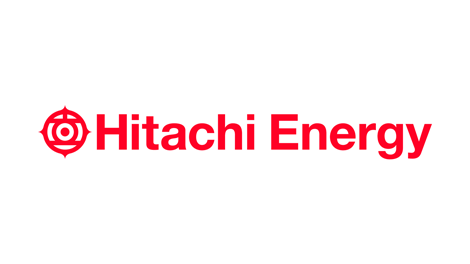Hitachi Energy – Hitachi Energy wins order to upgrade world-record high-voltage direct current transmission system
The Garabi HVDC converter station will be upgraded with advanced MACH™ control and protection system, extending the life of the world’s most powerful system of its kind.
Hitachi Energy, a global technology leader that is advancing a sustainable energy future for all, today announced it won an order to provide Taesa, one of Brazil’s largest private electric energy transmission groups, with an extensive upgrade of the Garabi high-voltage direct current (HVDC) converter station in Brazil. The link can transmit up to 2,200 megawatts of electricity, making it the most powerful “back-to-back”1 HVDC system in the world.
This order underlines Hitachi Energy Service’s commitment to trusted long-term partnerships and builds on our proven track record of delivering innovative and reliable energy service solutions.
The Garabi converter station enables power exchange between Argentina and Brazil, which is normally not possible as Argentina’s power system operates at 50 Hz, and Brazil’s operates at 60 Hz. The transmission system comprises 490 kilometers of alternating current overhead lines between the substations in northern Argentina and southern Brazil and the HVDC converter station at Garabi in Brazil, near the border.
The station began full commercial operation in 2000 and, after more than 20 years of operation, the control and protection system will be upgraded with the latest MACH™ technology2 from Hitachi Energy, which provides unequaled calculation capacity and enables a high degree of integration and handling for all control and protection functions. This will be the first HVDC upgrade in Brazil and will secure the electricity supply for the future while increasing reliability and availability.

“Our transmission systems have been helping to secure power in Brazil for decades,” said Niklas Persson, Managing Director at Hitachi Energy’s Grid Integration business. “We are proud to support Taesa by providing our cutting-edge HVDC control system and Hitachi Energy Service solutions, making the link more secure. Based on almost 70 years of experience, our services will extend the system lifetime and improve its availability and reliability.”
“Our mission is to connect Brazil with safe and reliable electricity, generating value for society and transmitting energy with excellence and quality,” said Emmanuel Pasqua de Moraes, Expansion Planning and Engineering Executive Manager of Taesa. “Cross-border interconnections such as Garabi are a key part of that mission and this Hitachi Energy HVDC system is an important part of securing power for the Brazilian National Interconnected System and with international connections increasing the energy security of our system.”
HVDC systems are commonly used for large-scale transmission and exchange of electricity over large distances between two HVDC converter stations, but the Garabi HVDC converter station is a back-to-back system in a single location.1 Back-to-back stations utilize the sophisticated, digital controllability of an HVDC system to precisely manage the flow and properties of the electricity supply, providing many benefits for grid control and stability.
Note to editors:
Hitachi Energy’s HVDC solution combines world-leading expertise in HVDC converter valves; the MACH™ digital control platform2, converter power transformers and high-voltage switchgear; as well as system studies, design and engineering, supply, installation supervision and commissioning.
HVDC Light® is a voltage source converter technology developed by Hitachi Energy, which was launched over 25 years ago. It is the preferred technology for many grid applications, including interconnecting countries, integrating renewables and “power-from-shore” connections to offshore production facilities. HVDC Light’s defining features include uniquely compact converter stations and exceptionally low electrical losses.
Hitachi Energy pioneered commercial HVDC technology almost 70 years ago and has delivered more than half of the world’s HVDC projects. Today, we have the largest installed base of HVDC in the world.
Hitachi Energy Service recognizes that the energy transition begins with existing infrastructure. Leveraging our century of experience and expertise, our dedicated teams deliver exceptional service solutions that cover the entire lifecycle of your assets, ensuring resilient operations. We offer expert advice at every stage of the process across the whole portfolio, addressing both present and future needs to help customers achieve a sustainable and secure energy future.
References
SourceHitachi Energy
EMR Analysis
More information on Hitachi Energy: See the full profile on EMR Executive Services
More information on Claudio Facchin (Chief Executive Officer, Hitachi Energy): See the full profile on EMR Executive Services
More information on Niklas Persson (Managing Director Grid Integration Business, Hitachi Energy): See the full profile on EMR Executive services
More information on MACH™ (Modular Advanced Control for HVDC) by Hitachi Energy: https://www.hitachienergy.com/products-and-solutions/hvdc/mach-control-and-protection-system + The control system is the brain in HVDC transmission systems. One of the most important advantages with modern HVDC technology is the controllability.
The Modular Advanced Control for HVDC (MACH™) control system provides unequalled calculation capacity and enables a high degree of integration and handling for all control and protection functions. Moreover, Modular Advanced Control for HVDC (MACH™) control provides advanced fault registration and remote control functions. The system is designed to run 24/7 for thirty years or more, allowing the HVDC system to be controlled and protected in the most reliable way throughout its life time.
More information on Taesa: https://institucional.taesa.com.br/ + Transmissora Aliança de Energia Elétrica SA – TAESA – is one of the largest private electricity transmission groups in Brazil in terms of Allowed Annual Revenue (RAP). The company is exclusively dedicated to the construction, operation and maintenance of transmission assets, with 13,832 km of lines in operation and 1,323 km of lines under construction, totaling 15,155 km in length and 109 substations. Furthermore, it has assets in operation with voltage levels between 230 and 525kV, presence in all 5 Regions of the country (19 States and the Federal District) and an Operation and Control Center located in Rio de Janeiro. TAESA currently holds 43 transmission concessions: (i) 10 concessions that make up the holding company (TSN, Novatrans, ETEO, GTESA, PATESA, Munirah, NTE, STE, ATE and ATE II); (ii) 14 full investments (Brasnorte, ATE III, São Gotardo, Mariana, Miracema, Janaúba, Sant’Ana, São João, São Pedro, Lagoa Nova, Ananaí, Pitiguari, Saíra and Tangará); and (iii) 19 participations (ETAU, Transmineiras and the AIE and TBE Groups).
More information on André Augusto Telles Moreira (Chief Executive Officer and Chief Legal and Regulatory Officer, Taesa): https://ri.taesa.com.br/en/corporate-governance/executive-board-board-and-committees/#1552389944541-d2df60f7-fd7f + https://www.linkedin.com/in/andr%C3%A9-augusto-telles-moreira-1030ba33/
More information on Emmanuel Pasqua de Moraes (Expansion Planning and Engineering Executive Manager, Taesa): https://www.linkedin.com/in/emmanuel-pasqua-de-m-59084637/
EMR Additional Notes:
- HVDC Light:
- HVDC Light is the successful and environmentally-friendly way to design a power transmission system for a submarine cable, an underground cable, using over head lines or as a back-to-back transmission. HVDC Light is HVDC technology based on voltage source converters (VSCs).
- HVDC Light is designed to transmit power underground and underwater, also over long distances. It offers numerous environmental benefits, including “invisible” power lines, neutral electromagnetic fields, oil-free cables and compact converter stations.
- As its name implies, HVDC Light is a dc transmission technology. However, it is different from the classic HVDC technology used in a large number of transmission schemes. Classic HVDC technology is mostly used for large point-to-point transmissions, often over vast distances across land or under water. It requires fast communications channels between the two stations, and there must be large rotating units – generators or synchronous condensers – present in the AC networks at both ends of the transmission. HVDC Light consists of only two elements: a converter station and a pair of ground cables. The converters are voltage source converters, VSC’s. The output from the VSC’s is determined by the control system, which does not require any communications links between the different converter stations. Also, they don’t need to rely on the AC network’s ability to keep the voltage and frequency stable. These feature make it possible to connect the converters to the points bests suited for the AC system as a whole.
- HVDC (High-Voltage Direct Current):
- Key enabler for a carbon-neutral energy system. It is highly efficient for transmitting large amounts of electricity over long distances, integration of renewables and interconnecting grids, opening up for new sustainable transmission solutions.
- HVDC Links:
- The first successful HVDC experimental long distance line (37 miles) was made at Munich, Germany in 1882 by Oskar Von Miller and fellow engineers.
- HVDC allows power transmission between AC transmission systems that are not synchronized. Since the power flow through an HVDC link can be controlled independently of the phase angle between source and load, it can stabilize a network against disturbances due to rapid changes in power.
- An HVDC line has considerably lower losses compared to HVAC over longer distances.

- Neu Connect (the first power interconnection between Great Britain and Germany): https://neuconnect-interconnector.com +
- The NeuConnect Interconnector will create the first direct power link between Germany and Great Britain, connecting two of Europe’s largest energy markets for the first time. Around 720km of land and subsea cables will form an ‘invisible highway’ allowing up to 1.4GW of electricity to move in either direction, enough to power up to 1.5 million homes over the life of the project.
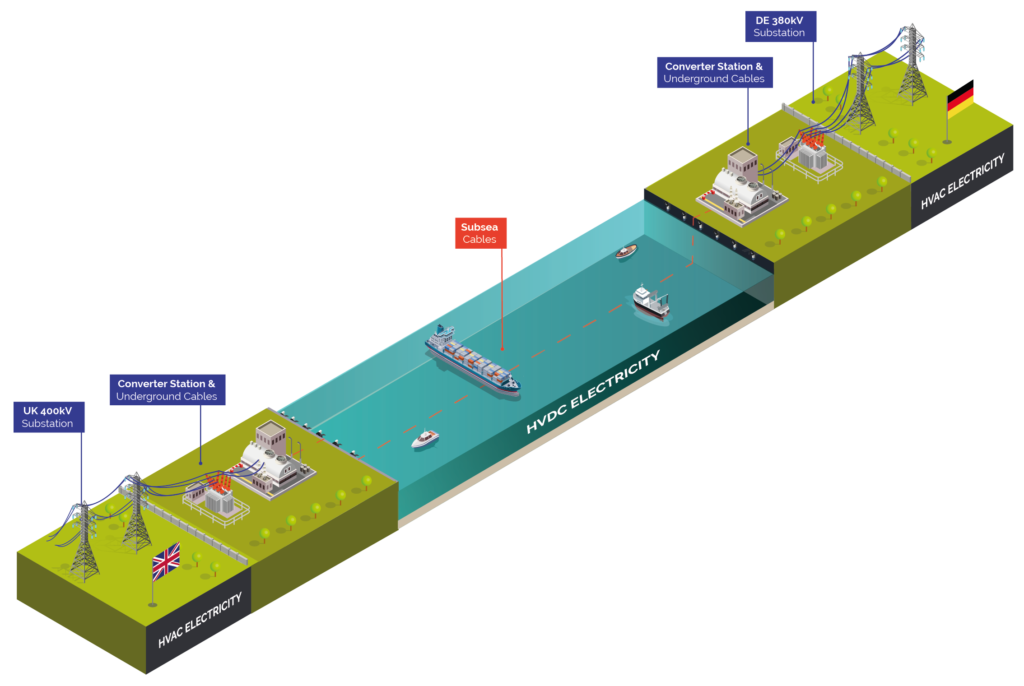
- The Tyrrhenian Link: https://www.terna.it/en/projects/public-engagement/Tyrrhenian-link +
- Connecting Sicily with Sardinia and the Italian peninsula via a double underwater cable: a new electricity corridor at the centre of the Mediterranean; the Tyrrhenian Link. At 950 kilometres long and with a capacity of 1000 MW, this is an infrastructure initiative of international significance, another step towards a more sustainable energy future. The link will improve electricity exchange capacity, facilitate the development of renewable energy sources, and the reliability of the grid.
- The overall project involves two sections: EAST from Sicily to Campania and WEST from Sicily to Sardinia.
- The East section is 480 kilometres long and connects the Fiumetorto landing point, in the municipality of Termini Imerese in Sicily, with the landing point in Torre Tuscia Magazzeno, near Battipaglia in Campania.
- The WEST section is approximately 470 kilometres long and connects the Fiumetorto landing point to the one in Terra Mala, in Sardinia.

- The Viking Link: https://viking-link.com +
- World’s longest power interconnection. the Viking Link is a 1400 MW high voltage direct current (DC) electricity link between the British and Danish transmission systems connecting at Bicker Fen substation in Lincolnshire and Revising substation in southern Jutland, Denmark.

- The North Sea Link: https://northsealink.com/ + North Sea Link is a 720 kilometre subsea interconnector linking the electricity systems of the UK and Norway. The 1400 megawatt interconnector stretches from Blyth in the UK, across the North Sea, to Kvilldal in Norway.
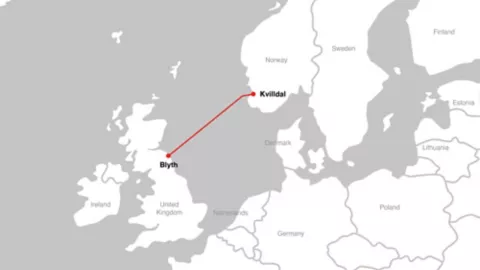
- The Hertel–New York interconnection line: https://www.hydroquebec.com/projects/hertel-new-york-interconnection/ + The Hertel–New York interconnection line project aims to supply clean, renewable energy to New York City. In Québec, the project involves the construction of a line that will span 57.7 km (56.1 km underground and 1.6 km underwater). This 400-kV direct current line will connect Hertel substation in La Prairie to an interconnection point in the Rivière Richelieu at the Canada–United States border.

- The Biscay Gulf Project: https://www.inelfe.eu/en/projects/bay-biscay + The electricity interconnection between Gatika (Spain) and Cubnezais (France) will be the first fundamentally submarine interconnection between Spain and France. This project will increase the exchange capacity from 2,800 to 5,000 MW, improving the safety, stability and quality of electricity supply between the two countries and also with the rest of Europe.
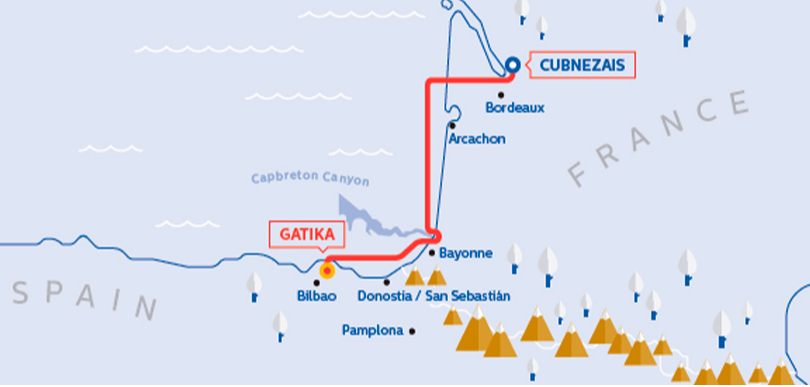
- The Eastern Green Link 2 (EGL2): https://www.ssen-transmission.co.uk/projects/project-map/eastern-green-link-2/ + The Eastern Green Link 2 project is a proposal to install a sub-sea high-voltage direct current (HVDC) cable from Sandford Bay, at Peterhead, to Drax in England. There is currently a large amount of forecasted generation that will require connection to the electricity network in the coming years and as such we are proposing several upgrades to the transmission network across the north of Scotland to facilitate this. The Eastern HVDC Link will play a key role in helping achieve our Net-Zero targets.
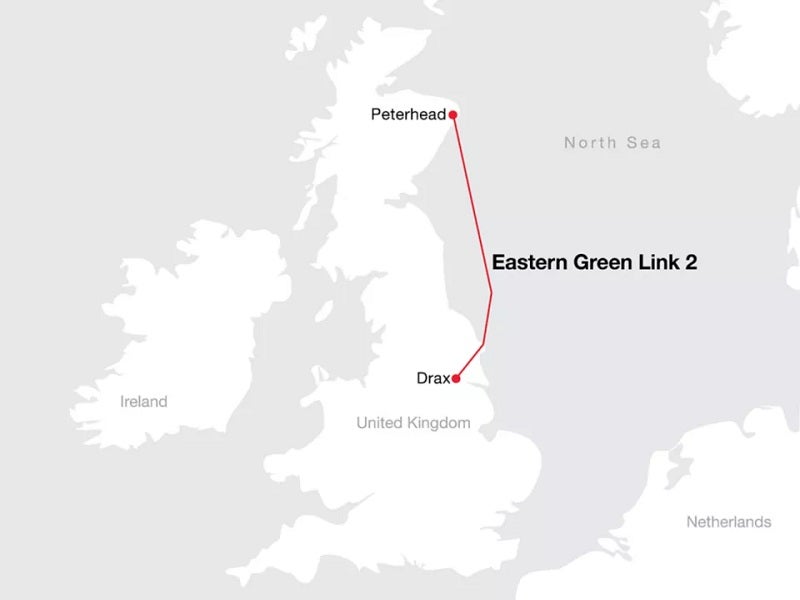
- The EuroAsia Interconnector: https://euroasia-interconnector.com/ + EuroAsia Interconnector Limited is the official EU project developer of the 2,000MW electricity interconnector between Israel, Cyprus, Greece and Europe. The EuroAsia Interconnector is a leading European Project of Common Interest (PCI) labelled as an EU “electricity highway” connecting the national electricity grids of Israel, Cyprus and Greece through a 1,208 km subsea HVDC cable.
- The EuroAsia Interconnector comprises the electricity interconnection between the grids of Israel, Cyprus, Greece through a subsea DC cable and with HVDC onshore converter stations at each connection point, with a total capacity of 2000MW. The project is an energy highway bridging Asia and Europe, with a total length of 1,208 km. It creates a reliable alternative route for the transfer of electric energy to and from Europe.

- Kilowatt (kW):
- A kilowatt is simply a measure of how much power an electric appliance consumes—it’s 1,000 watts to be exact. You can quickly convert watts (W) to kilowatts (kW) by diving your wattage by 1,000: 1,000W 1,000 = 1 kW.
- Megawatt (MW):
- One megawatt equals one million watts or 1,000 kilowatts, roughly enough electricity for the instantaneous demand of 750 homes at once.
- Gigawatt (GW):
- A gigawatt (GW) is a unit of power, and it is equal to one billion watts.
- According to the Department of Energy, generating one GW of power takes over three million solar panels or 310 utility-scale wind turbines

